To get the most benefit from your knee replacement surgery, rehabilitation will be very important.
Starting an exercise program before surgery can build your strength and allow you to become familiar with the exercises, which you can confidently continue during your recovery. The exercises you'll see in this booklet are also demonstrated on the www.drdeepakinamdar.com website.
You can also visit www.drdeepakinamdar.com for resources to help you with your exercise program including :
- A general guide to rehabilitation exercises
- Images and short videos to demonstrate how they're done
- A daily exercise reminder sheet that helps you track your recovery.
These exercises are a general guide to the type of exercises you may expect but you should always follow the individual program your physiotherapist or surgeon has recommended for you. Individual results may vary between patients.
Each patient will experience a different post-operative activity level, depending on their own individual clinical factors. Discuss with your doctor which exercises are most appropriate for you, how many you should do, and any movements you should avoid.
Your first group of exercises are designed to be done on your bed and can be started immediately after your surgery. Remember to start slowly and gently. If any of the exercises cause pain or discomfort, stop immediately and ask your physiotherapist for advice.
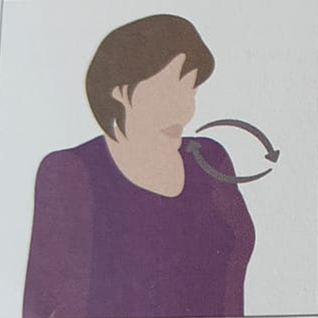
Deep breathing and coughing.
Following a major operation, it is very important to make sure you undertake regular, deep breathing and coughing exercises. This ensures you are getting air into the deepest part of your lungs and helps to prevent a chest infection. A deep breath followed by a strong cough should be done around 5 times each hour for the first week or so after your surgery.
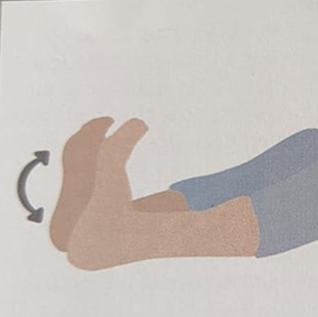
Ankle pumps.
During normal day-to-day activity, the contraction of your leg muscles helps the blood in the lower part of your body to return to your heart. As you'll spend a significant amount of time in bed resting, it's very important that you do these exercises very regularly to keep the blood in your legs flowing normally and returning to your heart. Start with feet at right angles to your leg. Push your feet down towards the bed, then back to the right angle position. Repeat this 10 times.
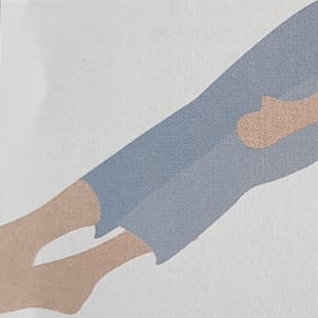
Static quads.
This exercise works your quadriceps, the large muscle in the front of your thigh. This is a good way to get the muscle starting to work whilst limiting movement across the hip. Whilst sitting, with legs out straight, squeeze the quadriceps gently as you press the back of the knee against the bed. Then gradually increase the strength of the contraction. Once fully contracted, hold it for 5 seconds, release and repeat it 10 times.
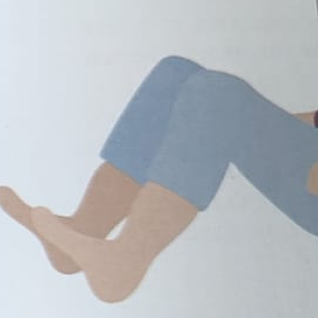
Static gluts.
This exercise contracts your gluteal (buttock) muscles. These are very important in walking and standing. First squeeze the muscle gently, then gradually make it tighter. Hold for 5 seconds and then release. Repeat this again 10 times.
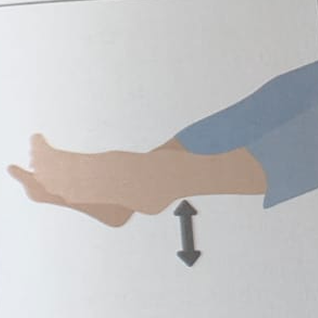
Inner range quads.
Place a rolled up towel under your knee.
Tighten your quadriceps - the large muscle at the front of your thigh - at the same time, push the back of your knee down into the towel and lift your heel off the bed. Hold the contraction for 5 seconds and slowly lower your leg. Repeat this 10 times. This is very important to have good control of your knee in a position that is nearly straight, as this assists you with using your knee correctly when standing and walking.
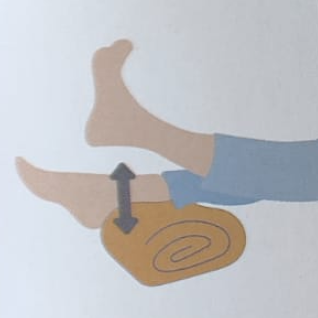
Straight leg raises.
Place a rolled up towel under your heel, squeeze the quadriceps and push the back of the knee into the bed. Then lift your heel 10cm off the bed, this will lock your knee out straight without letting your knee bend. Hold this for several seconds if possible, then release gently. Repeat this 10 times. For this exercise you can add weight to your ankle if they become too easy. This can simply be done by placing a bag of rice into an old sock and tying that to your ankle.
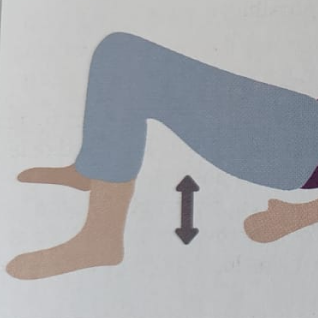
Bridging
This is another exercise to work your gluteal muscles. Bend your knees up, squeeze your gluteal, or your buttock, muscles, and slightly lift your buttocks off the bed. Hold the contraction for 5 seconds, lower and repeat this 10 times. Be guided by your physiotherapist as to whether this exercise is appropriate for your type of knee replacement.
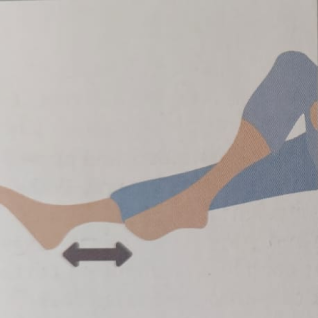
Knee flexion.
This exercise strengthens the hamstrings at the back of your thigh that bend your knee and allow you to go up and down stairs. It also aims to improve the amount of bend in your knee. Put your hands under your thigh and assist your knee to bend so that your heel slides along the bed towards your buttocks. Hold for 10-15 seconds, or as long as you can, for the best stretch. Repeat this 10 times.
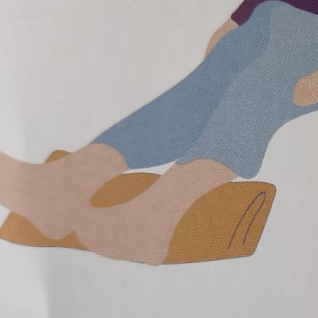
Knee extension.
It is very important to regain full extension of your knee as quickly as possible. The following exercise may be uncomfortable and create an ache as it stretches your knee into a straightened position. Place a towel under your ankle, allow time for your leg to relax and stretch slowly into the straightened position. Then slowly and gently push down on the knee to help add pressure to increase the stretch. Hold for at least 30 seconds, or longer, if you can tolerate the stretch. The idea is to try and slowly increase this time with each attempt. Once finishing the stretch, bending your knee will be difficult, so take it slowly and start with small movements. This stretch should be done at least 5 times a day but the more frequently you stretch, the faster your leg will straighten.
The rest of the exercises can be done in your own lounge room once you have left the hospital. All you will need is a chair, and if possible, a mirror.
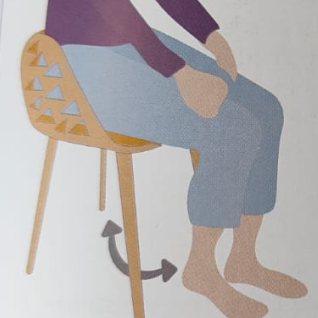
Advanced knee flexion.
Sitting on the edge of a chair, with your thighs parallel to the floor, bend your knee and take your foot back as far as possible under the chair. You may like to use your good leg to help push your foot further back. Hold for at least 30 seconds, or as long as you can. Repeat 10 times.
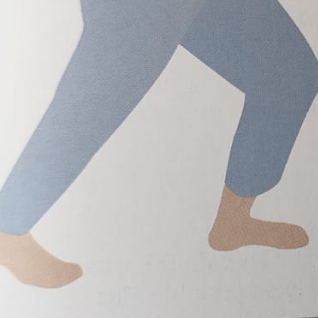
Calf stretching.
Stand holding a chair for support and place your operated leg slightly behind you. With your feet facing straight ahead and keeping your heel down and your knee straight, lunge forward on your good leg. This will stretch the calf on the back of your operated leg. It is important to maintain the flexibility of your knee so that you can regain your full range of movement. Hold this stretch for 30 seconds.

Calf stretching.
Stand holding a chair for support and place your operated leg slightly behind you. With your feet facing straight ahead and keeping your heel down and your knee straight, lunge forward on your good leg. This will stretch the calf on the back of your operated leg. It is important to maintain the flexibility of your knee so that you can regain your full range of movement. Hold this stretch for 30 seconds.
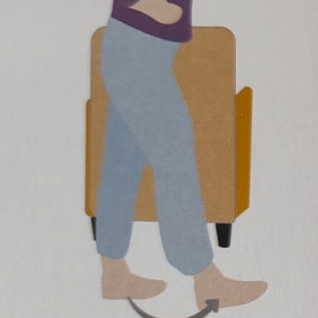
Balance practice.
The next exercise works the muscles around your pelvis to give you stability, better balance and safer walking. It is important that you do these on both legs as the moving leg works to create movement while the other leg also works hard to stand upright and stabilise your pelvis. Stand upright and use the support of a chair. A mirror will give you some visual clues as to how you are doing with this exercise, Gently swing your leg forward and backwards but at the same time, making sure the rest of your body stays very still. With increasing confidence, rely less on the chair for support, and more on your balance. Take care to swing your leg in a slow and controlled manner. Repeat this 20 times. Repeat this exercise but this time move your leg outwards to the side and then back to the centre. Again, make sure you keep your body still and focus on your balance. Repeat this 20 times.
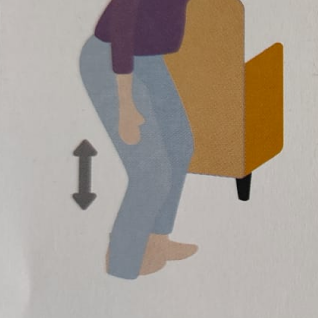
Half squats.
Standing alongside a chair, keeping your back straight and upright, gently bend at the knees and hips, slowly lowering yourself down. Go only as far as comfortable and never go past 90 degrees with your hip. Use the chair for balance only and not to take your weight. Keep looking forward and resist the temptation to bend your back. Repeat the squat 10 times.
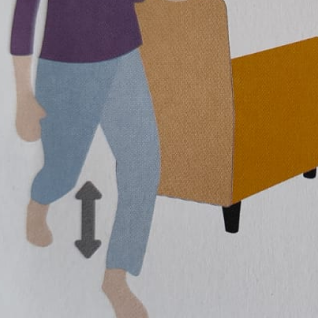
Lunges
Standing alongside a chair, place one leg in front of the other. You'll need to exercise both legs, so it doesn't matter which one you do first. Keep your back straight and look forward. Make sure both feet are pointing straight ahead and are parallel. Go only as far as comfortable and use the chair for balance only, and not to take your weight. Keep the movements slow and controlled. Repeat this 10 times for each leg.